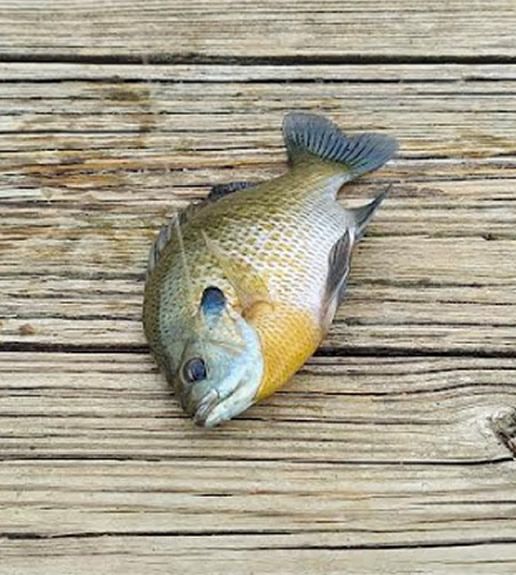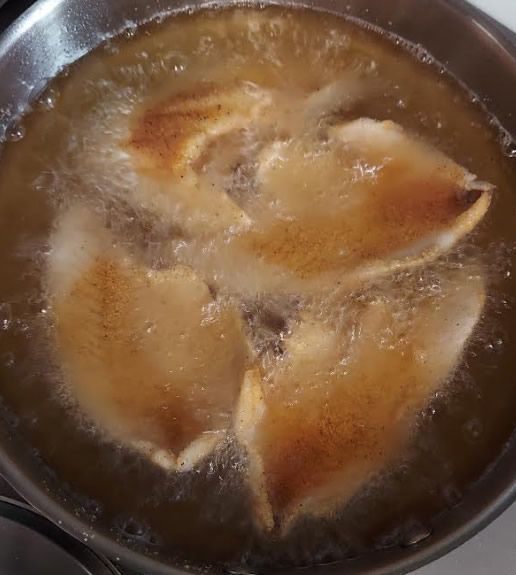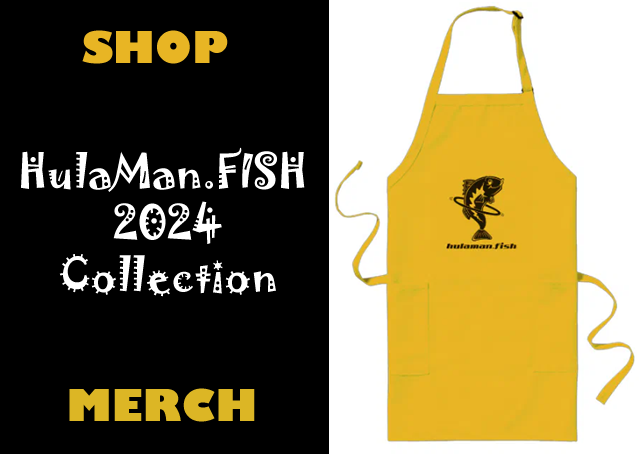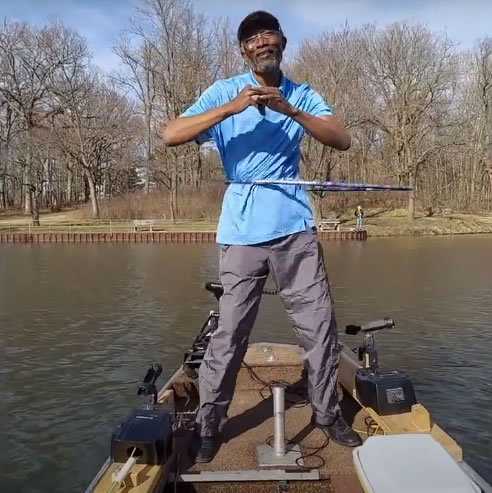In Jesse’s own words…
Frying bluegill and crappie are both popular methods of preparing these freshwater fish, each offering a distinct culinary experience. Bluegill, known for its mild flavor and fine texture, is a favorite among anglers and home cooks alike. When frying bluegill, it’s essential to use a light breading or batter to keep its delicate taste intact. A simple mixture of flour, cornmeal, and a dash of seasoning can work wonders. Fry the fish in hot oil until it turns golden brown and crispy on the outside, which typically takes just a few minutes per side. The result is a tender, flaky fish that pairs well with lemon wedges and tartar sauce.
On the other hand, crappie, with its slightly firmer texture and subtle sweetness, also makes for an excellent fried dish. Crappie fillets are typically larger than bluegill, which can influence the cooking time and breading choices.
Photo Credit: Jesse
Using Jesse’s own words, we came up with this for content for the website article.
Frying fish is a time-honored tradition that brings out the best flavors in freshwater species like bluegill and crappie. Each type of fish offers its own unique taste and texture, which can be highlighted with the right frying technique. Whether you’re an experienced angler looking to cook your catch or a home cook wanting to try something new, understanding the nuances of frying these fish can elevate your culinary skills. Here are some expert tips to ensure you achieve the perfect fried bluegill and crappie every time.
Perfecting Fried Bluegill: Light and Crispy Every Time
Bluegill is a popular choice for frying due to its mild flavor and fine, delicate texture. To get the most out of your bluegill, follow these simple yet effective cooking tips:
- Choose the Right Breading: Because bluegill has a subtle flavor, it’s important to choose a breading that complements rather than overwhelms it. A light coating made from a mix of flour, cornmeal, and a touch of seasoning (like salt, pepper, and paprika) can add a delightful crunch while allowing the natural flavor of the fish to shine. You can also add a bit of garlic powder or cayenne pepper for a mild kick.
- Keep the Oil Hot: Maintaining the correct oil temperature is key to achieving a crispy, golden exterior without overcooking the delicate meat. Aim for an oil temperature of around 350°F (175°C). If the oil is too cool, the breading will absorb too much oil and become soggy. If it’s too hot, the outside will burn before the inside is fully cooked. Use a thermometer to monitor the oil and adjust the heat as needed.
- Don’t Overcrowd the Pan: Frying too many pieces of fish at once can lower the oil temperature and lead to uneven cooking. Fry the bluegill in small batches, ensuring each piece has enough space to cook evenly and develop a crispy crust. This also makes it easier to manage and flip the fish without breaking the delicate fillets.
- Drain Properly: Once the bluegill is cooked to a golden brown, remove it from the oil and place it on a wire rack or a plate lined with paper towels to drain any excess oil. This helps maintain the crispiness of the fish. Serve immediately with lemon wedges and a side of homemade tartar sauce for a classic touch.
Getting the Best Out of Crappie: Firm and Flavorful
Crappie is another favorite for frying, known for its slightly firmer texture and sweet, mild flavor. Here’s how to fry crappie to perfection:
- Adjust the Breading for Larger Fillets: Crappie fillets are usually larger and thicker than bluegill, which can affect the cooking process. To ensure even cooking, consider using a slightly thicker breading made from a mix of cornmeal and flour, with added spices like garlic powder, onion powder, and cayenne pepper for extra flavor. The thicker breading will help protect the fillet from overcooking while giving it a satisfying crunch.
- Cooking Time Matters: Because crappie fillets are larger, they may require a bit more time in the fryer compared to bluegill. Keep an eye on the color and texture, and be prepared to adjust the cooking time based on the size of the fillets. Generally, it takes about 3-5 minutes per side to achieve a golden, crispy exterior with a tender, flaky interior.
- Consider Using a Buttermilk Soak: To enhance the flavor and texture of crappie, try soaking the fillets in buttermilk for about 30 minutes before breading. The buttermilk helps to tenderize the fish and adds a subtle tanginess that complements its natural sweetness. After soaking, dredge the fillets in your seasoned breading mixture and fry as usual.
- Pair with Complementary Sides: Fried crappie pairs beautifully with a variety of sides that enhance its flavor. Consider serving with coleslaw, hush puppies, or a fresh garden salad. A tangy remoulade sauce or a spicy aioli can also provide a flavorful contrast to the mild, sweet taste of the fish.
General Tips for Frying Fish
Whether you’re frying bluegill, crappie, or any other type of fish, these general tips will help you achieve the best results:
- Use Fresh, High-Quality Fish: The quality of your fish greatly impacts the final dish. Fresh fish will have a clean smell and firm texture. If you’re not using freshly caught fish, make sure to buy from a reputable source and check the quality before cooking.
- Choose the Right Oil: Neutral oils with high smoke points, such as canola, peanut, or vegetable oil, are best for frying fish. These oils won’t impart a strong flavor and can withstand the high temperatures needed for frying.
- Season the Fish Before Breading: Lightly seasoning the fish with salt and pepper before dredging in the breading mixture can enhance the flavor. This step ensures that the seasoning penetrates the fish, rather than just sitting on the surface.
- Rest the Fish After Breading: After coating the fish with the breading mixture, let it rest for a few minutes before frying. This helps the breading adhere better, resulting in a crispier crust.
- Test the Oil with a Small Piece of Bread: Before frying your fish, drop a small piece of bread into the oil. If it sizzles and turns golden brown in about 60 seconds, the oil is ready. This simple test can prevent undercooked or overly greasy fish.
Experiment and Enjoy
Frying fish can be a fun and rewarding culinary experience, especially when you take the time to understand the characteristics of each type of fish and adjust your techniques accordingly. Whether you prefer the light, flaky texture of bluegill or the firmer, slightly sweet taste of crappie, there’s a world of flavors to explore.
Experiment with different breading mixes, seasonings, and accompaniments to find your perfect combination. And remember, the joy of cooking is as much about the process as it is about the result. Enjoy the journey, and savor the delicious rewards of your hard work.
With these tips and a little practice, you’ll be able to fry bluegill and crappie like a pro, impressing family and friends with your culinary skills. So, get your gear ready, head to your favorite fishing spot, and bring home some fresh fish to fry up for a memorable meal!









